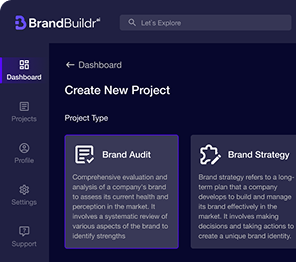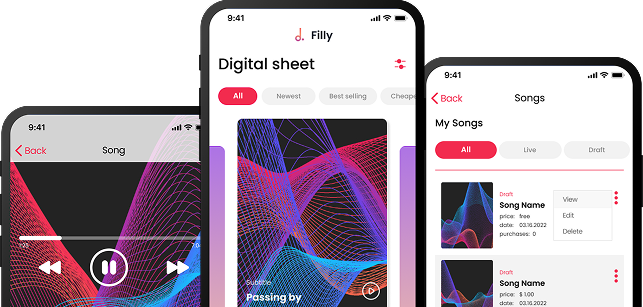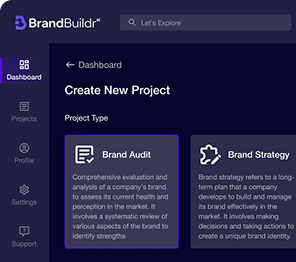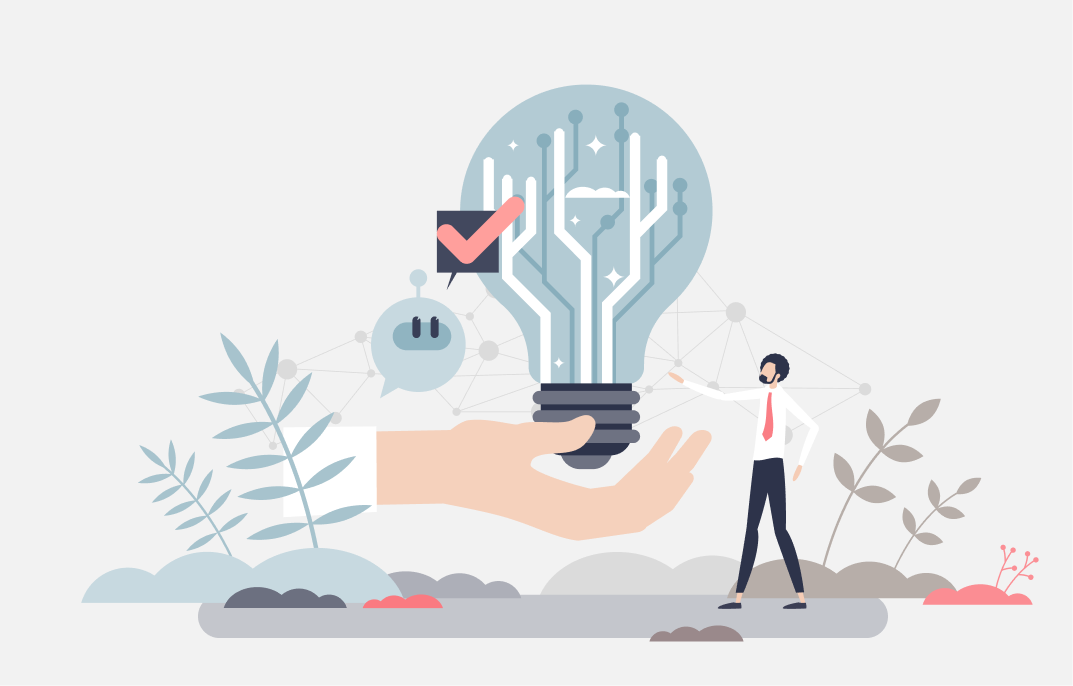I once saw a small bakery completely transform its business by implementing a simple online ordering system. Before, they relied solely on foot traffic, but after introducing the new system, their sales skyrocketed. This showcases the power of IT development services, proving that strategic technology implementation can be a game-changer for businesses of all sizes.
In today's rapidly evolving business environment, software and technology are no longer just supporting elements; they are the backbone of success. Strategic IT development drives innovation, boosts efficiency, and provides a crucial competitive edge. The Standish Group reports that approximately 31.1% of software projects are canceled before completion, while up to 52.7% exceed their initial budget by as much as 189%. These statistics are concerning for anyone planning a new software development initiative — no one wants to end up in that 31%. Let's explore the world of IT development services and how they can transform and improve your business.

Decoding IT Development Services
IT development services encompass a wide range of professional services focused on creating, implementing, and maintaining technology solutions. But what exactly does that mean?

At its core, IT development services are about building and improving software and systems to meet specific business needs. This includes custom software development, where solutions are tailored to unique requirements, as well as web development, which focuses on creating and maintaining websites and web applications. It is also important to note that people play an important role in development services. According to a report by Apium Hub and Codingsans, the key factors in hiring for software development projects include a candidate's willingness to learn, relevant work experience, performance on technical skill assessments, and alignment with the company’s culture. Mobile app development is another key area, creating applications for smartphones and tablets, while cloud solutions involve leveraging cloud computing technologies for scalability and efficiency.
These services are crucial for businesses of all sizes. Startups can use IT development to build their initial products and establish their online presence. Larger enterprises can leverage these services to streamline operations, improve customer engagement, and drive innovation.
It's important to distinguish IT development services from general IT support. While IT support focuses on maintaining existing systems and resolving technical issues, IT development services are about creating new solutions and enhancing existing ones. They are proactive, strategic, and focused on driving business growth through technology.
A Spectrum of IT Development Services
The world of IT development is vast and varied, encompassing a wide range of specialized services. Here's a closer look at some of the most common and impactful types of IT development services:
- Software Development: This involves creating custom software solutions tailored to specific business needs. This could range from a small utility application to a large-scale enterprise application designed to manage complex business processes.
- Web Development: This focuses on building and maintaining websites and web applications. It can be further broken down into:
- Front-end development: This deals with the user interface (UI) and everything users see and interact with on a website or web application.
- Back-end development: This focuses on the server-side logic, databases, and APIs that power the application.
- Full-stack development: This encompasses both front-end and back-end development, providing a comprehensive approach to web development. Check out this resource on web applications development to learn more.
- Mobile App Development: This involves creating applications for smartphones and tablets. This can include:
- Native iOS app development: Building apps specifically for Apple devices.
- Native Android app development: Building apps specifically for Android devices.
- Cross-platform app development: Using frameworks like React Native or Flutter to build apps that can run on both iOS and Android.
- Cloud Computing: This involves leveraging cloud technologies for various purposes, such as:
- Cloud migration services: Moving existing applications and data to the cloud.
- Cloud-native development: Building new applications specifically designed to run in the cloud.
- Database Management: This includes database design, optimization, and maintenance services to ensure data is stored efficiently and securely.
- QA and Testing: This involves ensuring the quality of software through various testing methods, such as:
- Manual testing: Testing software by hand to identify bugs and issues.
- Automated testing: Using automated tools to run tests and identify regressions.
- Performance testing: Evaluating the performance of software under different load conditions.
- Security testing: Identifying security vulnerabilities in software.
Each of these services plays a crucial role in creating and maintaining effective IT solutions. Depending on your business needs, you may require one or more of these services to achieve your goals.
Understanding the Software Development Lifecycle (SDLC)
The Software Development Lifecycle (SDLC) is a structured process that outlines the steps involved in developing software, from initial concept to deployment and maintenance. Understanding the SDLC is crucial for managing IT development projects effectively. Let's examine each stage in detail:
- Requirements Gathering: This initial phase involves understanding the client's needs and documenting them clearly. It's crucial to ask the right questions, conduct thorough interviews, and analyze existing systems to gather all the necessary information. A well-defined set of requirements serves as the foundation for the entire project.
- Design: This phase translates the requirements into a detailed plan for the software. It includes:
- Architectural design: Defining the overall structure and components of the software.
- UI/UX design: Designing the user interface and user experience to be intuitive and engaging.
- Database design: Designing the database schema and data structures to store and manage data efficiently.
- Implementation: This is where the actual coding takes place. Developers write code based on the design specifications, following coding standards and best practices. Code reviews are conducted to ensure code quality and identify potential issues. Version control systems like Git are used to manage changes to the codebase.
- Testing: This phase involves rigorously testing the software to identify and fix bugs. Different testing methods are used, including:
- Unit testing: Testing individual components of the software in isolation.
- Integration testing: Testing how different components of the software interact with each other.
- System testing: Testing the entire system to ensure it meets the specified requirements.
- User acceptance testing (UAT): Allowing end-users to test the software and provide feedback.
- Deployment: This phase involves deploying the software to the production environment. This includes:
- Environment setup: Configuring the server and network infrastructure.
- Configuration management: Managing the configuration of the software and its dependencies.
- Release management: Planning and executing the release of new versions of the software.
- Maintenance: This ongoing phase involves providing support and updates for the software. This includes:
- Bug fixes: Addressing any issues that arise after deployment.
- Security updates: Patching security vulnerabilities to protect the software from attacks.
- Performance optimization: Improving the performance of the software to ensure it runs efficiently.
By following the SDLC, IT development teams can ensure that projects are delivered on time, within budget, and to the satisfaction of the client.

Choosing the Right IT Development Partner
Selecting the right IT development partner is a critical decision that can significantly impact the success of your project. Here are some key factors to consider when making your choice:

- Experience and Expertise: Look for providers with a proven track record and relevant experience in your industry. Do they have a portfolio of successful projects that demonstrate their capabilities? A company that has "Completed 600+ software projects with 99% job success score" like Codebridge clearly demonstrates a high level of experience and a commitment to client satisfaction.
- Technical Skills: Ensure the provider has the necessary technical skills and expertise in the technologies you need. Do they have expertise in the programming languages, frameworks, and platforms that are relevant to your project?
- Communication and Collaboration: Effective communication is essential for a successful IT development project. Choose a provider that values clear and frequent communication, and that is committed to a collaborative approach.
- Project Management: A well-defined project management methodology is crucial for keeping the project on track and within budget. Ask about the provider's project management processes and tools.
- Cost: While cost is a factor, it shouldn't be the only consideration. Prioritize quality and experience over the lowest price. A cheap provider may end up costing you more in the long run if they deliver subpar work.
- Portfolio: Ask to see examples of their previous work and case studies. This will give you a better understanding of their capabilities and the quality of their work.
By carefully considering these factors, you can choose an IT development partner that is the right fit for your needs and that can help you achieve your business goals.
Tangible Benefits of Leveraging IT Development Services
Investing in IT development services can bring a wealth of tangible benefits to your organization, driving efficiency, innovation, and growth. Let's explore some of the most significant advantages:
- Access to Expertise: One of the primary benefits is gaining access to specialized skills and knowledge without the expense of hiring full-time employees. IT development firms employ experts in various technologies, methodologies, and industries, providing you with a diverse talent pool to draw from.
- Improved Efficiency: By outsourcing IT development, you can streamline your development processes and reduce time to market. Experienced developers can leverage their knowledge and best practices to deliver solutions faster and more efficiently than an in-house team might.
- Reduced Costs: Outsourcing IT development can significantly lower your development costs compared to building and maintaining an in-house team. You eliminate expenses related to salaries, benefits, training, and infrastructure.
- Faster Time to Market: With streamlined processes and access to expertise, you can accelerate the development process and get your product to market faster. This can be a critical competitive advantage in today's fast-paced business environment.
- Focus on Core Business: By outsourcing IT development, you can free up your internal resources to focus on your core competencies and strategic initiatives. This allows you to concentrate on what you do best and drive growth in your primary areas of expertise.
- Scalability: IT development services offer the ability to scale development resources up or down as needed. This flexibility is particularly valuable for businesses with fluctuating workloads or those experiencing rapid growth.
By leveraging these benefits, businesses can unlock their full potential and achieve significant competitive advantages.

Navigating Common Challenges in IT Development
IT development projects, while promising significant benefits, can also present a range of challenges. Understanding these potential pitfalls and proactively addressing them is crucial for project success.
- Communication Barriers: Miscommunication or lack of communication can lead to misunderstandings, delays, and errors. To mitigate this, establish clear communication channels, use collaboration tools, and hold regular meetings to keep everyone informed and aligned.
- Scope Creep: Uncontrolled changes or additions to the project scope can lead to budget overruns and delays. To avoid scope creep, define the project scope clearly upfront and manage changes effectively through a formal change management process.
- Technical Issues: Unexpected technical challenges can arise during development, leading to delays and increased costs. Implement robust testing and quality assurance processes throughout the development lifecycle to identify and address technical issues early on.
- Budget Overruns: Poor budget management can lead to cost overruns and financial strain. Manage budgets carefully, track expenses closely, and have contingency plans in place to address unexpected costs.
- Time Delays: Unrealistic timelines or unforeseen delays can jeopardize project success. Create realistic timelines, monitor progress closely, and proactively identify and address potential delays.
- Security Vulnerabilities: Neglecting security considerations during development can lead to vulnerabilities that can be exploited by attackers. Implement security best practices throughout the development process, including secure coding practices, penetration testing, and vulnerability assessments.
By proactively addressing these common challenges, you can increase the likelihood of a successful IT development project.
Emerging Trends Shaping the Future of IT Development
The IT development landscape is constantly evolving, driven by emerging trends and technological advancements. Understanding these trends is crucial for businesses looking to stay ahead of the curve.
- Artificial Intelligence (AI): AI is playing an increasingly important role in automating development tasks, such as code generation and testing. It's also being used to enhance software functionality, such as adding intelligent features to applications.
- Cloud Computing: The adoption of cloud technologies continues to grow, with more and more businesses migrating their applications and data to the cloud. Serverless computing, a cloud-based execution model, is also gaining popularity.
- Blockchain: Blockchain technology is being used in various applications, such as supply chain management, identity verification, and secure data storage.
- Low-Code/No-Code Development: Low-code/no-code platforms are enabling businesses to build applications with minimal coding. These platforms empower citizen developers and accelerate the development process.
- Cybersecurity: With the increasing threat of cyberattacks, cybersecurity is becoming more critical. Secure coding practices, vulnerability assessments, and penetration testing are essential for protecting software from attacks.
- Internet of Things (IoT): The growth of IoT is driving the development of applications for connected devices. These applications require specialized development skills and expertise.
By embracing these emerging trends, businesses can unlock new opportunities and gain a competitive advantage.
UX/UI: The Cornerstone of Successful IT Development
In the realm of IT development, the importance of UX/UI (User Experience/User Interface) design cannot be overstated. It's the cornerstone of successful software, websites, and applications, influencing user satisfaction, engagement, and ultimately, business outcomes.
User-centered design is paramount. This means designing with the user in mind, conducting thorough user research to understand their needs, behaviors, and motivations. By putting the user first, you can create interfaces that are intuitive, efficient, and enjoyable to use.
Good UX/UI can significantly enhance user satisfaction, increase engagement, and drive adoption. When users have a positive experience with your software, they are more likely to use it regularly and recommend it to others. Furthermore, "Achieved 30%+ increase in client conversion rates through UX/UI redesign projects (per case study data)" as seen on clutch.co, highlighting the significant impact of effective UX/UI design on business outcomes.
UX/UI can also optimize user flows and improve conversion rates. By designing interfaces that guide users seamlessly through the desired actions, you can increase the likelihood of them completing those actions, whether it's making a purchase, filling out a form, or subscribing to a newsletter.
Moreover, UX/UI contributes to brand building and creates a positive brand image. A well-designed interface can convey your brand's personality, values, and message, leaving a lasting impression on users. A well-designed interface can convey your brand's personality, values, and message, leaving a lasting impression on users.
A well-designed interface can convey your brand's personality, values, and message, leaving a lasting impression on users.
Finally, it's crucial to design accessible applications that can be used by people with disabilities. This includes following accessibility guidelines and ensuring that your software is compatible with assistive technologies.
KPIs for IT Development Projects
Measuring the success of IT development projects is essential for understanding their impact on your business and for making informed decisions about future investments. Key performance indicators (KPIs) provide a quantifiable way to track progress and assess outcomes.
The specific KPIs you choose will depend on the type of IT development project and your business goals. However, some common KPIs include:
- Website Traffic: Measures the number of visitors to your website.
- Conversion Rates: Tracks the percentage of visitors who complete a desired action, such as making a purchase or filling out a form.
- User Engagement: Measures how users interact with your software, such as time spent on site, pages visited, and features used.
- Customer Satisfaction: Gauges customer satisfaction levels through surveys and feedback forms.
- Cost Savings: Calculates the cost savings achieved through the implementation of IT solutions.
In addition to these quantitative metrics, it's also important to collect and analyze user feedback through surveys, interviews, and usability testing. This qualitative data can provide valuable insights into user experiences and identify areas for improvement.
Website analytics tools like Google Analytics can be used to track website traffic, bounce rate, time on site, and other relevant metrics. By monitoring these metrics, you can gain a better understanding of how users are interacting with your website and identify opportunities to optimize its performance.
Finally, calculate the return on investment (ROI) for IT development projects by comparing the benefits to the costs. This will help you determine whether the project was a worthwhile investment and inform future decision-making.
Selecting the Right IT Development Methodology
Choosing the right IT development methodology is crucial for ensuring the success of your project. Different methodologies offer different approaches to project management, development, and collaboration. Here's a comparison of some popular methodologies:
- Agile: Agile is an iterative and incremental methodology that emphasizes flexibility, adaptability, and collaboration. Agile projects are typically broken down into small, manageable sprints, with frequent feedback and adjustments. Agile is well-suited for projects with evolving requirements and a need for rapid iteration. To learn more about this methodology, check out this resource on custom software development services.
- Waterfall: Waterfall is a sequential methodology that follows a linear, step-by-step approach. Each phase of the project must be completed before moving on to the next. Waterfall is best suited for projects with well-defined requirements and a stable scope.
- DevOps: DevOps is a collaborative approach that emphasizes communication, automation, and continuous integration and continuous delivery (CI/CD). DevOps aims to streamline the development process and accelerate the release of new software versions.
- Lean: Lean is a methodology that focuses on eliminating waste and maximizing value. Lean projects are typically characterized by a focus on efficiency, continuous improvement, and customer satisfaction.
When choosing a methodology, consider factors such as project size, complexity, team experience, and the level of uncertainty involved. There is no one-size-fits-all approach, so it's important to select a methodology that aligns with your specific needs and goals. Furthermore, Codebridge company "Serves 145+ multinational clients across 15 countries" which demonstrates the project's global reach. You can learn more about our expertise exploring our portfolio.
Achieving Business Success with Strategic IT Development Services
In conclusion, strategic IT development services are essential for achieving business success in today's competitive market. By understanding the different types of IT development services, the software development lifecycle, and the key considerations for choosing an IT development partner, businesses can make informed decisions that drive innovation, efficiency, and growth. Partnering with a reliable and experienced provider can provide access to specialized skills, reduce costs, and accelerate time to market.
Ready to unlock your business's full potential with expert IT development services? Contact Codebridge today for a free consultation and discover how we can help you achieve your strategic goals.
Heading 1
Heading 2
Heading 3
Heading 4
Heading 5
Heading 6
Lorem ipsum dolor sit amet, consectetur adipiscing elit, sed do eiusmod tempor incididunt ut labore et dolore magna aliqua. Ut enim ad minim veniam, quis nostrud exercitation ullamco laboris nisi ut aliquip ex ea commodo consequat. Duis aute irure dolor in reprehenderit in voluptate velit esse cillum dolore eu fugiat nulla pariatur.
Block quote
Ordered list
- Item 1
- Item 2
- Item 3
Unordered list
- Item A
- Item B
- Item C
Bold text
Emphasis
Superscript
Subscript





















.avif)



.avif)

.avif)


